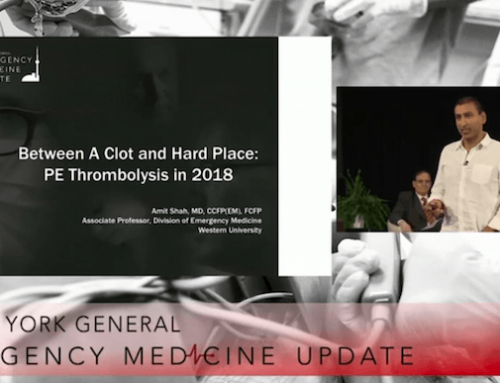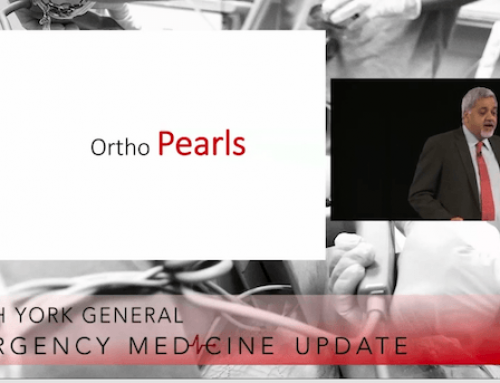EMU 365: Bleeding Out – Massive Transfusion in Trauma
There is a critically ill trauma patient arriving to your emergency department. What considerations do you make when deciding whether this patient requires massive transfusion? In this EMU365 video, Dr. Andrew Petrosoniak talks about identifying which trauma patients require large volume blood resuscitation, tools to help with this decision making, how to deliver blood and more…
Speaker Bio
Dr. Petrosoniak is an emergency physician and trauma team leader at St. Michael’s Hospital. He’s an assistant professor at the University of Toronto and an associate scientist at the Li Ka Shing Knowledge Institute. His clinical focus is trauma resuscitation and massive transfusions in critically injured patients. His research focuses on using in situ simulation to improve patient safety and optimizing skill acquisition of rarely performed procedures. More recently, he’s applying simulation to inform design within newly constructed clinical environments. His publications include work on using in situ simulation in emergency medicine and trauma care. He’s an invited speaker at national and international conferences on topics related to acute trauma resuscitation, in situ simulation and design in healthcare.
Formula to assess which patients need massive transfusion (MTP)
Clinical judgement + Mechanism of injury + Pitfall conditions
Identify early on who needs blood and how
- Identify patients requiring high resuscitation intensity rather than using definition of MTP requiring 10 units/24hrs
Tools to help identify who needs blood
- ABC score: penetrating injury, + FAST, SBP <90, HR >120, score >2 = MTP
- Shock index = HR / SBP, SI >1 predicts MTP
Pitfall conditions
- Transient hypotension, may be only indication patient is bleeding
- Anticoagulation, not well represented in MTP studies, have lower threshold for calling for blood
- Elderly: different physiology, medications
How to give blood
- Team preparation: Shared mental model, priority to get blood products
- Access: goal is to get peripheral IV (16/18 gauge in AC) > CVC
- Balanced blood products: Aggregate of balanced ratio: 4u PRBC up front, once FFP thawed, then administer
- Adjuncts: Things for we tend to forget include TXA, calcium, check fibrinogen and replace with cryoprecipitate




Leave A Comment